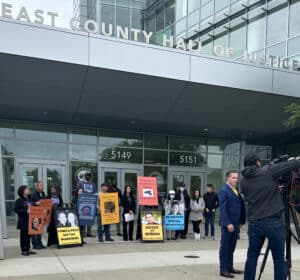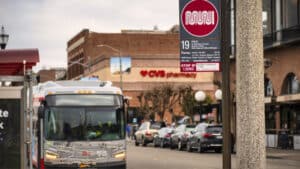This week’s question comes from Marylyn T who asks: “I am working in a state owned building that I believe is not ADA compliant. I have had 2 major foot surgeries over the last 18 months, and the facility has no elevator. I have had to walk up and down 19 concrete steps to access restrooms and break rooms, extending my healing time. I believe a state agency should be in compliance with the ADA law for both customers and employees.”
Dear Marylyn, you are 100% correct that state and local government entities have an obligation, pursuant to Titles II and III of the ADA, to provide accessible workplace facilities. In some limited instances, usually in private buildings, there may be exceptions or exemptions due to historical significance or because the age of the building. Some buildings, built before 1992 when the ADA went into effect, are granted exemptions because bringing the building in compliance may involve issues which may not be either “readily achievable” or “technically feasible.”
The American’s with Disabilities Act, was passed in 1992 and codified in 42 United States Code Section 12101 et. seq. (et. seq. means and following). Sections 12131 et. seq. contain what is referred to as Title II and Title III of the ADA which states that no qualified individual with a disability shall, by reason of such disability, be excluded from participation in or be denied the benefits of the services, programs, or activities of a public entity, or be subjected to discrimination by any such entity.
The requirements for accessibility compliance are determined by the type of facility, the ownership entity and the date of construction.
Most state owned and operated facilities and private commercial properties need to comply with the Americans with Disabilities Act Accessibility guidelines (ADAAG) and the requirements of the 2010 California Building Code (CBC).
Any building which has been constructed since 1992 has had to comply with the then current ADA regulations. These regulations have been incorporated in the California Building Code.
The Department of Justice published revised regulations for Titles II and III of the Americans with Disabilities Act of 1990 “ADA” in the Federal Register on September 15, 2010. These regulations adopted revised, enforceable accessibility standards called the 2010 ADA Standards for Accessible Design “2010 Standards” or “Standards”.
The 2010 Standards set minimum requirements – both scoping and technical — for newly designed and constructed or altered State and local government facilities, public accommodations, and commercial facilities to be readily accessible to and usable by individuals with disabilities. This includes the removal of any physical barriers to entering and using existing facilities when “readily achievable.”
Readily achievable means “easily accomplishable and able to be carried out without much difficulty or expense.” What is readily achievable will be determined on a case-by-case basis in light of the resources available.
Examples of barrier removal measures include: installing ramps, making curb cuts at sidewalks and entrances, rearranging tables, chairs, vending machines, display racks, and other furniture, widening doorways, installing grab bars in toilet stalls, and adding raised letters or braille to elevator control buttons. If the stairs prevent you from accessing vital areas such as meeting rooms, bathrooms, then barriers to you accessing these areas should be removed where feasible. Barrier removal measures must comply, when readily achievable, with the alterations requirements of the ADA Accessibility Guidelines. If compliance with the Guidelines is not readily achievable, other safe, readily achievable measures must be taken, such as installation of a slightly narrower door than would be required by the Guidelines.
As this is a state building, I would suggest that you go to the Equal Opportunity Compliance officer within the state agency that you work for. Hopefully they will facilitate improvement of the facility. If they will not, contact the Division of the State Architect which has jurisdiction over access compliance requirements for all buildings in California that are publicly-funded in whole or in part by the use of state funds. You also have the rights to file a discrimination lawsuit but I first recommend trying to resolve the problem without litigation.
Next week I will further discuss what accommodations you are entitled to as an employee under the Fair and Employment and Housing Act.










